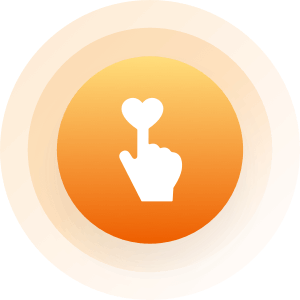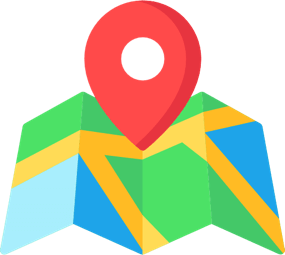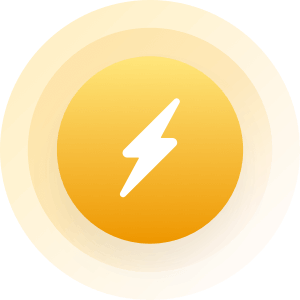HIV Epidemic in NZ: Rise in infections for gay men
Thursday, 4 June 2015, 9:36 am
Press Release: New Zealand AIDS Foundation
HIV Epidemic in NZ: Rise in infections for gay men a serious concern
Increased HIV prevention awareness in community needed
The latest figures by the AIDS Epidemiology Group show that in 2014, 217 people were newly reported with HIV in New Zealand. When comparing the number with preceding years, this is higher than any year since 2008.
Gay and bisexual men and other men who have sex with men (MSM) continue to be the most affected group. Of the 217 newly reported diagnoses, 136 (63%) were MSM. Eighty-six (86) of these men were infected in New Zealand compared to 69 in 2013.
“This is the third year in a row that the number of gay and bisexual men infected with HIV has increased which is seriously concerning,” says Shaun Robinson, Executive Director, New Zealand AIDS Foundation (NZAF). “While it is too early to know if this is a long term trend it confirms the need for increased HIV prevention awareness in the community and ramp up prevention action.”
The government invests $4.2 million per annum and the New Zealand AIDS Foundation provides an integrated package of HIV prevention activity focused on promoting condom use and HIV testing and treatment; particularly for men who have sex with men.
HIV prevention has been very successful in New Zealand and we continue to have a prevalence rate amongst MSM that is one of the lowest in the world at 6.5%. This is less than half that of Australia where MSM HIV prevalence is 14% (it is 24% in San Francisco and close to 20% in London).
“2014s results need to be seen in this overall context, but it is essential that we take the rising number of infections seriously” said Mr. Robinson.
The increase in new infections in 2014 is likely the result of a range of factors:
• Some gay and bisexual men are simply not responding to the messages to use condoms and lubricant. While 80% of gay men are high condom users, 20% are not. They may have concluded that HIV is not something to worry about or that they can tell who is infectious and who is not. Sadly this has led to new infections of HIV which remains an incurable disease.
• HIV testing numbers across New Zealand have been increasing and have nearly doubled in 10 years. This is likely to be diagnosing some of the 20% of MSM who have HIV but do not know it. If the number of undiagnosed cases is reduced this is a good thing. While these men may have been infected some years ago these infections will be showing in the statistics in the year in which they were diagnosed. Once diagnosed, people with HIV can take medication that both improves their health and dramatically reduces their ability to pass on the virus.
• New migrant populations are coming to New Zealand in increasing numbers and many have different levels of understanding of sexuality and HIV/AIDS. These changes are demonstrated by the number of Asian MSM being diagnosed with HIV (13% in 2014).
• Nearly 1 in 6 of the MSM who contracted HIV in 2014 was infected overseas where efforts to promote condom use have been far less effective.
• If diagnosed early people with HIV now live a full life span, thanks to modern treatment. This is a major improvement on the situation in the 1980s and 1990s. It also means that there is pressure on the prevention of HIV as there are more people each year that can potentially pass on the virus to someone else.
“NZAF is very focused on the 2014 epidemiology results. We are determined to improve on New Zealand’s good record in HIV prevention and not to let it go backwards,” said Mr. Robinson.
NZAF will be ramping up prevention efforts in the following ways:
• The promotion of condoms is being taken to even more sophisticated levels to target the 20% of MSM who do not use them regularly.
• HIV testing is being promoted more extensively in a wide variety of settings so as to reduce the rate of undiagnosed and late diagnosed HIV. Reducing stigma associated with HIV which will encourage testing.
• Early access to HIV treatment is being advocated for people with the virus so as to capture the benefits of their reduced infectivity a well as the health benefits for the person. PHARMAC will be lobbied to fund the removal of the CD4 threshold to access treatments
• NZAF is stepping up its work with specific cultural communities to gain their support and understanding in combating HIV.
• PrEP, the use of HIV medications by people who do not have the virus, is being explored for people are at high risk of infection and who resist condoms use.
------------------------------------------------------
https://en.m.wikipedia.org/?title=New_Zealand/
This article is about the constituent country within the Realm of New Zealand. For other uses, see New Zealand (disambiguation).
"NZ" redirects here. For other uses, see NZ (disambiguation).
New Zealand
Aotearoa (Māori)
Flag Coat of arms
Anthem:
"God Defend New Zealand"
"God Save the Queen"[n 1]
Location of New Zealand within the Realm of New Zealand
Location of New Zealand within the Realm of New Zealand
Capital Wellington
41°17′S 174°27′E
Largest city Auckland
Official languages
95.9% English[n 2]
4.2% Māori
0.6% NZ Sign Language
Ethnic groups (2013)
74.0% European
14.9% Māori
11.8% Asian
7.4% Pacific peoples
1.2% Middle Eastern, Latin American, African
1.7% Other[4]
Demonym New Zealander
Kiwi (informal)
Government Unitary parliamentary constitutional monarchy
- Monarch Elizabeth II
- Governor-General Jerry Mateparae
- Prime Minister John Key
Legislature Parliament
(House of Representatives)
Independence from the United Kingdom
- Responsible government 7 May 1856
- Dominion 26 September 1907
- Statute of Westminster adopted 25 November 1947
- De jure independence 10 December 1947
Area
- Total 268,021 km2 (75th)
103,483 sq mi
- Water (%) 1.6[n 3]
Population
- June 2014 estimate 4,570,038[6] (123rd)
- 2013 census 4,242,048
- Density 16.8/km2 (205th)
43.6/sq mi
GDP (PPP) 2015 estimate
- Total $164.965 billion[7]
- Per capita $36,152[7]
GDP (nominal) 2015 estimate
- Total $191.730 billion[7]
- Per capita $42,017[7]
Gini (2010) 0.32[8]
low
HDI (2013) Steady 0.910[9]
very high · 7th
Currency New Zealand dollar (NZD)
Time zone NZST[n 4] (UTC+12)
- Summer (DST) NZDT (UTC+13)
(Sep to Apr)
Date format dd/mm/yyyy
Drives on the left
Calling code +64
ISO 3166 code NZ
Internet TLD .nz
New Zealand (Māori: Aotearoa [aɔˈtɛaɾɔa]) is an island country in the southwestern Pacific Ocean.
The country geographically comprises two main landmasses – that of the North Island, or Te Ika-a-Māui, and the South Island, or Te Waipounamu – and numerous smaller islands. New Zealand is situated some 1,500 kilometres (900 mi) east of Australia across the Tasman Sea and roughly 1,000 kilometres (600 mi) south of the Pacific island areas of New Caledonia, Fiji, and Tonga. Because of its remoteness, it was one of the last lands to be settled by humans. During its long isolation, New Zealand developed a distinctive biodiversity of animal, fungal and plant life. The country's varied topography and its sharp mountain peaks, such as the Southern Alps, owe much to the tectonic uplift of land and volcanic eruptions. New Zealand's capital city is Wellington, while its most populous city is Auckland.
Polynesians settled New Zealand in 1250–1300 CE and developed a distinctive Māori culture. Abel Tasman, a Dutch explorer, was the first European to sight New Zealand in 1642.[10] In 1840, representatives of the British Crown and Māori Chiefs signed the Treaty of Waitangi, making New Zealand a British colony. Today, the majority of New Zealand's population of 4.5 million is of European descent; the indigenous Māori are the largest minority, followed by Asians and Pacific Islanders. Reflecting this, New Zealand's culture is mainly derived from Māori and early British settlers, with recent broadening arising from increased immigration. The official languages are English, Māori and New Zealand Sign Language, with English predominant. The country's economy was historically dominated by the export of wool, but exports of dairy products, meat, and wine, along with tourism, are more significant today.
Nationally, legislative authority is vested in an elected, unicameral Parliament, while executive political power is exercised by the Cabinet, led by the Prime Minister, who is currently John Key. Queen Elizabeth II is the country's head of state and is represented by a Governor-General. In addition, New Zealand is organised into 11 regional councils and 67 territorial authorities for local government purposes. The Realm of New Zealand also includes Tokelau (a dependent territory); the Cook Islands and Niue (self-governing states in free association with New Zealand); and the Ross Dependency, which is New Zealand's territorial claim in Antarctica. New Zealand is a member of the United Nations, Commonwealth of Nations, ANZUS, Organisation for Economic Co-operation and Development, Pacific Islands Forum and Asia-Pacific
--------------------------------------------------------
https://en.m.wikipedia.org/?title=New_Zealand/
Circle frame.svg
Religion in New Zealand (2013)[1]
Roman Catholic (11.07%)
Anglican (10.33%)
Presbyterian (7.44%)
Other Christianity (14.63%)
Hinduism (2.02%)
Buddhism (1.31%)
Islam (1.04%)
---------------------------------------------- https://en.m.wikipedia.org/wiki/Same-sex_marriage_in_New_Zealand/
Same sex marriage legal
Edited by
SassyEuro2
on Fri 06/26/15 03:02 PM

 ...And I agree!
...And I agree!



 , have been the fastest growing group with AIDS.
, have been the fastest growing group with AIDS.







